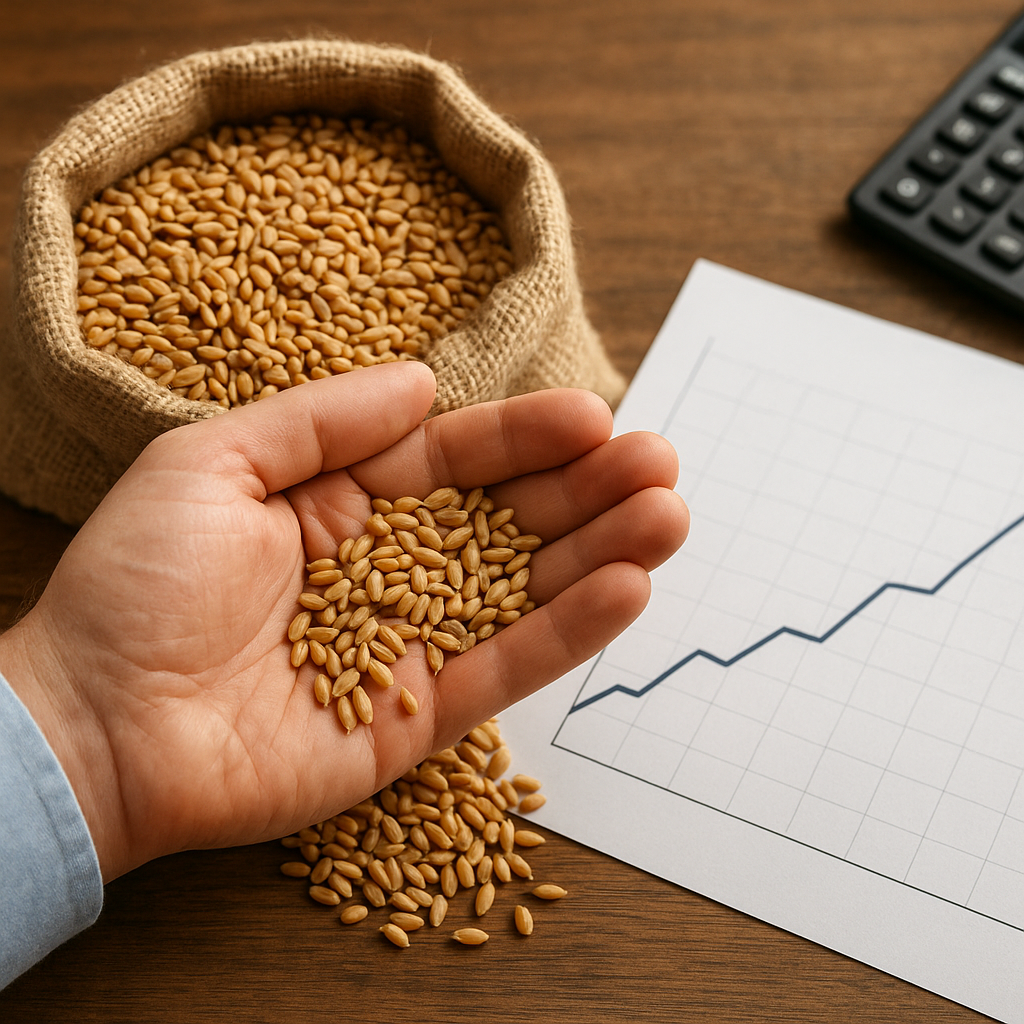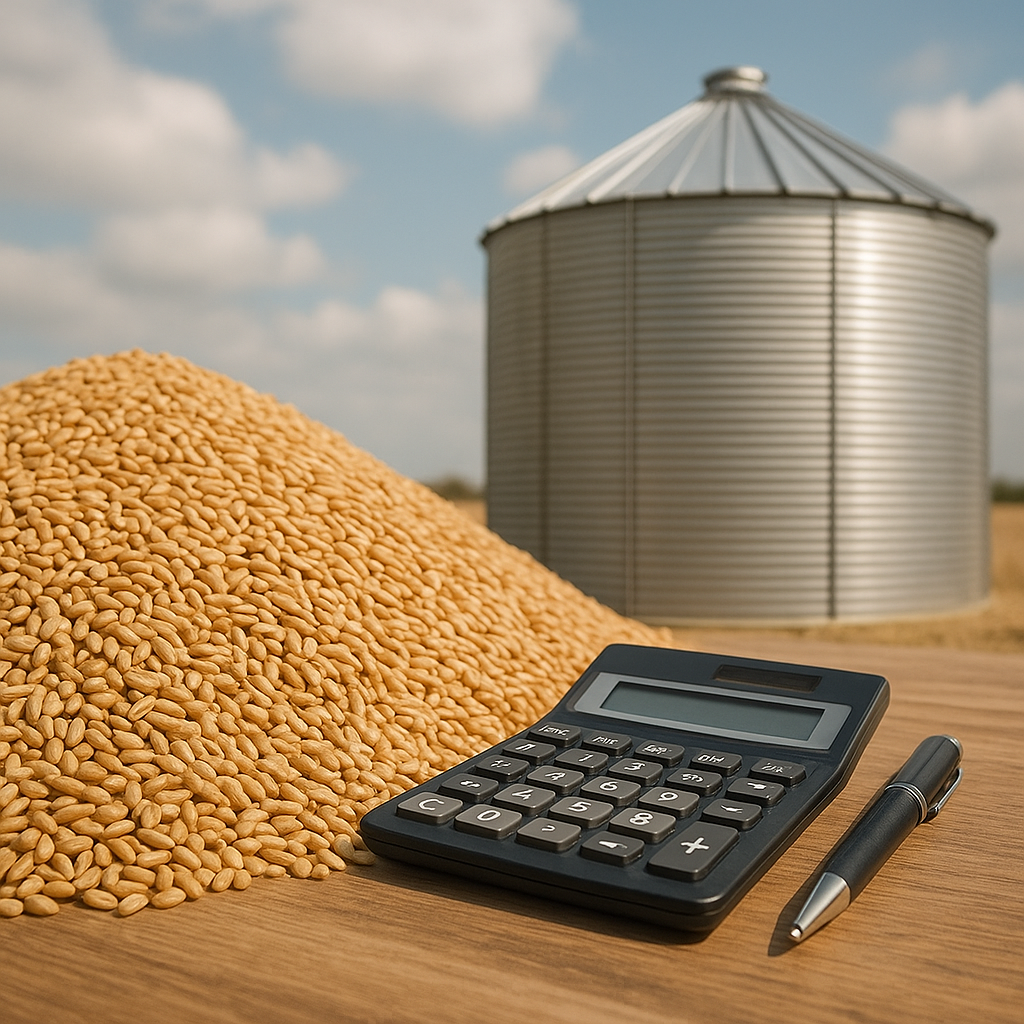Global grain prices play a crucial role in the agricultural economy, influencing food security, trade dynamics, and the livelihoods of millions of farmers worldwide. Understanding the trends and forecasts of these prices is essential for stakeholders, including policymakers, traders, and consumers. This article delves into the factors affecting grain prices, recent trends observed in the market, and future forecasts that could shape the agricultural landscape.
Factors Influencing Global Grain Prices
Several interconnected factors influence global grain prices, ranging from climatic conditions to geopolitical events. Understanding these factors is vital for predicting price movements and making informed decisions in the agricultural sector.
1. Weather Conditions
Weather plays a significant role in grain production. Droughts, floods, and other extreme weather events can drastically affect crop yields. For instance, a drought in the United States, one of the largest grain producers, can lead to reduced corn and soybean outputs, causing prices to surge. Conversely, favorable weather conditions can lead to bumper harvests, resulting in lower prices.
2. Supply and Demand Dynamics
The basic economic principle of supply and demand is a primary driver of grain prices. When demand for grains increases—due to population growth, dietary changes, or increased biofuel production—prices tend to rise. Conversely, if supply outstrips demand, prices may fall. The balance between these two forces is constantly shifting, influenced by global economic conditions and consumer preferences.
3. Geopolitical Factors
Geopolitical events can have immediate and profound impacts on grain prices. Trade policies, tariffs, and sanctions can disrupt supply chains and alter trade flows. For example, tensions between major grain-exporting countries can lead to uncertainty in the market, prompting price fluctuations. Additionally, conflicts in key agricultural regions can hinder production and distribution, further exacerbating price volatility.
4. Currency Fluctuations
Since grains are traded globally, currency exchange rates can significantly impact prices. A stronger U.S. dollar, for instance, can make American grains more expensive for foreign buyers, potentially reducing demand and leading to lower prices. Conversely, a weaker dollar can boost exports, driving prices up. Understanding these currency dynamics is essential for traders and investors in the grain market.
5. Technological Advancements
Advancements in agricultural technology, such as genetically modified organisms (GMOs), precision farming, and improved irrigation techniques, can enhance crop yields and reduce production costs. These innovations can lead to increased supply, which may lower prices. However, the adoption of such technologies can also be met with resistance due to regulatory concerns and consumer preferences, influencing market dynamics.
Recent Trends in Global Grain Prices
In recent years, global grain prices have experienced significant fluctuations due to a combination of the factors mentioned above. Analyzing these trends provides insight into the current state of the market and potential future developments.
1. Price Volatility in 2020-2023
The COVID-19 pandemic had a profound impact on global grain prices. Initially, prices surged due to supply chain disruptions and panic buying. However, as countries adapted and production resumed, prices began to stabilize. By 2021, grain prices reached record highs, driven by strong demand from China and adverse weather conditions in key producing regions.
2. The Role of China
China’s increasing demand for grains, particularly corn and soybeans, has been a significant driver of price trends. The country’s efforts to rebuild its pig herd after African swine fever led to a surge in soybean imports for animal feed. This demand has contributed to rising prices, impacting global markets and trade flows.
3. Climate Change Impacts
Climate change is increasingly affecting grain production, leading to unpredictable weather patterns and extreme events. For instance, the 2022 drought in Europe and parts of North America resulted in lower yields for wheat and barley, pushing prices higher. As climate-related challenges continue to escalate, their impact on grain prices is expected to grow.
4. Biofuel Demand
The rising demand for biofuels, particularly in the context of renewable energy policies, has also influenced grain prices. Corn, for example, is a primary feedstock for ethanol production. As governments push for greener energy solutions, the competition between food and fuel can lead to increased prices for grains, affecting food security globally.
5. Market Speculation
Speculation in commodity markets can lead to price volatility. Traders often react to news and forecasts, which can amplify price movements. For instance, reports of potential crop failures or changes in government policies can trigger speculative buying or selling, impacting prices in the short term.
Future Forecasts for Global Grain Prices
Looking ahead, several factors will likely shape the trajectory of global grain prices. Understanding these forecasts can help stakeholders prepare for potential market shifts.
1. Continued Demand Growth
As the global population continues to grow, the demand for grains is expected to rise. The United Nations projects that the world population will reach approximately 9.7 billion by 2050, increasing the need for food production. This growing demand, coupled with changing dietary preferences, particularly in developing countries, will likely exert upward pressure on grain prices.
2. Climate Change Adaptation
As climate change continues to impact agricultural production, the industry will need to adapt. Investments in sustainable farming practices, drought-resistant crops, and improved water management will be crucial. While these adaptations may initially require significant investment, they could lead to more stable production levels and mitigate price volatility in the long run.
3. Technological Innovations
Advancements in agricultural technology are expected to continue shaping grain production. Innovations such as vertical farming, artificial intelligence in crop management, and biotechnology could enhance yields and reduce costs. As these technologies become more widely adopted, they may help stabilize prices by increasing supply.
4. Geopolitical Stability
The geopolitical landscape will remain a critical factor in determining grain prices. Trade agreements, tariffs, and international relations will influence market dynamics. A more stable geopolitical environment could lead to increased trade and lower prices, while ongoing tensions may result in volatility.
5. Policy Changes and Sustainability Initiatives
Government policies aimed at promoting sustainability and food security will also play a role in shaping grain prices. Initiatives to reduce greenhouse gas emissions, promote regenerative agriculture, and support smallholder farmers could impact production levels and market dynamics. Stakeholders will need to stay informed about these policy changes to navigate the evolving landscape effectively.
In conclusion, global grain prices are influenced by a complex interplay of factors, including weather conditions, supply and demand dynamics, geopolitical events, currency fluctuations, and technological advancements. Recent trends have shown significant volatility, driven by the COVID-19 pandemic, rising demand from China, and climate change impacts. Looking ahead, continued demand growth, climate change adaptation, technological innovations, geopolitical stability, and policy changes will shape the future of grain prices. Stakeholders must remain vigilant and adaptable to navigate the challenges and opportunities that lie ahead in the global grain market.













